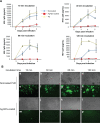Inactivation of microbial infectiousness by silver nanoparticles-coated condom: a new approach to inhibit HIV- and HSV-transmitted infection
- PMID: 23049252
- PMCID: PMC3459690
- DOI: 10.2147/IJN.S34973
Inactivation of microbial infectiousness by silver nanoparticles-coated condom: a new approach to inhibit HIV- and HSV-transmitted infection
Abstract
Recent research suggests that today's condoms are only 85% effective in preventing human immunodeficiency virus (HIV) and other sexually transmitted diseases. In response, there has been a push to develop more effective ways of decreasing the spread of the disease. The new nanotechnology-based condom holds the promise of being more potent than the first-generation products. The preliminary goal of this study was to develop a silver nanoparticles (Ag-NPs)-coated polyurethane condom (PUC) and to investigate its antimicrobial potential including the inactivation of HIV and herpes simplex virus (HSV) infectiousness. The Ag-NPs-coated PUC was characterized by using ultraviolet-visible spectrophotometry, Fourier transform-infrared spectroscopy, high-resolution scanning electron microscopy, and energy-dispersive analysis of X-ray spectroscopy. Nanoparticles were stable on the PUC and not washed away by water. Morphology of the PUC was retained after coating. The NP binding is due to its interaction with the nitrogen atom of the PUC. No significant toxic effects was observed when human HeLa cells, 293T and C8166 T cells were contacted to Ag-NPs-coated PUC for three hours. Interestingly, our results demonstrated that the contact of the Ag-NPs-coated PUC with HIV-1 and HSV-1/2 was able to efficiently inactivate their infectiousness. In an attempt to elucidate the antiviral action of the Ag-NPs, we have demonstrated that the anti-HIV activity was primarily mediated by the Ag-NPs, which are associated with the PUC. In addition, the data showed that both macrophage (M)-tropic and T lymphocyte (T)-tropic strains of HIV-1 were highly sensitive to the Ag-NPs-coated PUC. Furthermore, we also showed that the Ag-NPs-coated PUC was able to inhibit the growth of bacteria and fungi. These results demonstrated that the Ag-NPs-coated PUC is able to directly inactivate the microbe's infectious ability and provides another defense line against these sexually transmitted microbial infections.
Keywords: HIV-1; HSV-1/2; antimicrobial; condom; silver nanoparticles.
Figures








References
-
- UNAIDS More than 80 countries increase their domestic investments for AIDS by over 50% between 2006 and 2011. July 18, 2012. Available from: http://www.unaids.org/en/resources/presscentre/pressreleaseandstate-ment.... Accessed on August 12, 2012.
-
- Pauwels R, DeClercq E. Development of vaginal microbicides for the prevention of heterosexual transmission of HIV. J Acquir Immune Defic Syndr Hum Retrovirol. 1996;11(3):211–221. - PubMed
-
- Balzarini J, Van Damme L. Microbicide drug candidates to prevent HIV infection. Lancet. 2007;369(9563):787–797. - PubMed
-
- Turpin JA. Considerations and development of topical microbicides to inhibit the sexual transmission of HIV. Expert Opin Investig Drugs. 2002;11(8):1077–1097. - PubMed
-
- Kippley J, Kippley S. The Art of Natural Family Planning. 4th ed. Cincinnati, OH: The Couple to Couple League; 1996.
Publication types
MeSH terms
Substances
Grants and funding
LinkOut - more resources
Full Text Sources
Other Literature Sources
Medical
Miscellaneous

